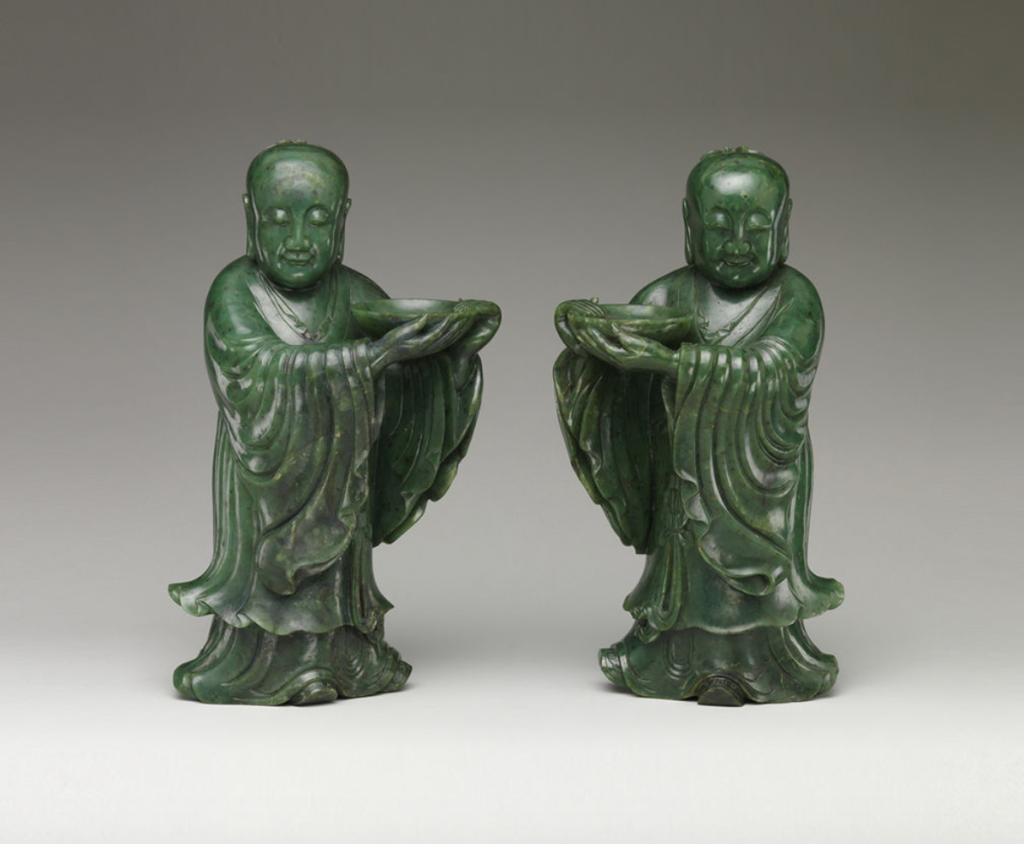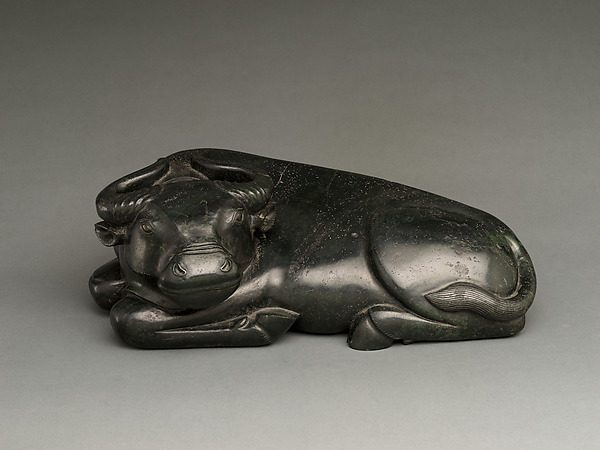
Two immortals, China, Qing dynasty (1644–1911), late 18th century. Jade (nephrite). Gift of Heber R. Bishop, 1902 (02.18.411) (left); Gift of Florence and Herbert Irving, 2015 (2015.500.5.12) (right)
Masters and Masterpieces: Chinese Art from the Florence and Herbert Irving Collection
January 30-October 17, 2021
An outstanding selection of Chinese art gifted to The Met by Florence and Herbert Irving is the focus of this exhibition. Beginning in the early 1970s, the Irvings built one of the most comprehensive and superb collections of Chinese art in the world. For more than three decades, the couple helped The Met acquire important artworks and provided support for exhibitions, and their passion was a factor in building the current exhibition galleries dedicated to Chinese decorative arts. Their generous gifts of more than five hundred exceptional objects fundamentally transformed the holdings of Chinese art at The Met.
The approximately 120 works on display (in each rotation) cover almost all major categories of Chinese art, with a focus on three-dimensional objects, including lacquer, ceramic, metal work, jade, bamboo, and stone carvings. Created by both famous and unknown masters, these extraordinary works represent the artistic sophistication and technical virtuosity of Chinese decorative arts from the tenth through the early twentieth century. In addition to the Irvings’ well-known assemblage of lacquer ware, the exhibition also showcases their recent gifts of a group of jade and bamboo works from the eighteenth-century imperial workshop that have never before been on display. This presentation reunites important private loans formerly in the Irvings’ collection with comparative pieces from The Met collection.

Water Buffalo, China, Qing dynasty (1644-1911), 18th century. Jade (nephrite). Gift of Edward S. Harkness, 1936
Celebrating the Year of the Ox
January 30, 2021–January 17, 2022
The traditional East Asian lunar calendar consists of a repeating 12–year cycle, with each year corresponding to one of the 12 animals in the Chinese zodiac. The association of these creatures with the Chinese calendar began in the third century B.C. and became firmly established by the first century A.D. The 12 animals are, in sequence: rat, ox, tiger, rabbit, dragon, snake, horse, ram, monkey, rooster, dog, and pig. Each is believed to embody certain traits that are manifested in the personalities of the people born in that year. This Lunar New Year, which begins on February 12, 2021, is the Year of the Ox.
In celebration of the Year of the Ox, this exhibition presents depictions of oxen and water buffalo (considered the same category of animals in China) created by artists in the last 3,000 years. Particularly notable are a massive eighteenth-century jade sculpture of a water buffalo and a remarkable eighth-century set of ceramic Chinese zodiac figures, illustrating the important role that the animals play in the life of humans.
